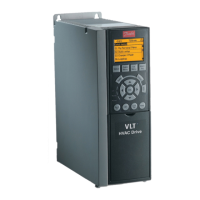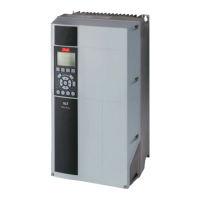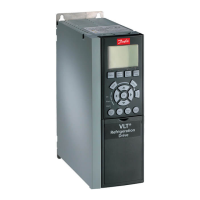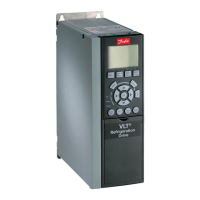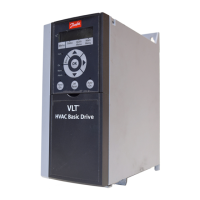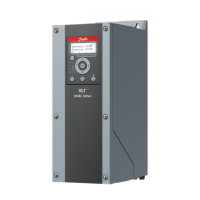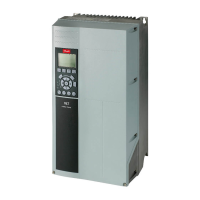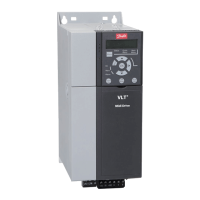•
•
•
•
•
•
•
-
-
•
•
•
9.3.64 ALARM 68, Safe Stop Activated
Cause
Safe Torque O (STO) has been activated.
Troubleshooting
To resume normal operation, apply 24 V DC to terminal 37, then send a reset signal (via bus, digital, or by pressing [Reset]).
9.3.65 ALARM 69, Power Card Temperature
Cause
The temperature sensor on the power card is either too hot or too cold.
Troubleshooting
Check that the ambient operating temperature is within the limits.
Check for clogged lters.
Check fan operation.
Check the power card.
9.3.66 ALARM 70, Illegal FC Conguration
Cause
The control card and power card are incompatible.
Troubleshooting
To check compatibility, contact the Danfoss supplier with the type code from the unit nameplate and the part numbers on the
cards.
9.3.67 ALARM 71, PTC 1 Safe Stop
Cause
Because the motor is too warm, the VLT
®
PTC Thermistor Card MCB 112 activated the Safe Torque O (STO).
Troubleshooting
Once the motor temperature reaches an acceptable level and the digital input from MCB 112 is deactivated, perform 1 of the
following:
Send a reset signal via bus or digital I/O.
Press [Reset].
9.3.68 ALARM 72, Dangerous Failure
Cause
Safe Torque O (STO) with trip lock.
Troubleshooting
An unexpected combination of STO commands has occurred:
VLT
®
PTC Thermistor Card MCB 112 enables X44/10, but STO is not enabled.
MCB 112 is the only device using STO (specied through selection [4] PTC 1 alarm or [5] PTC 12 warning in parameter 5-19 Termi-
nal 37 Safe Stop). STO is activated, but X44/10 is not activated.
9.3.69 WARNING 73, Safe Stop Auto Restart
Cause
STO activated.
Troubleshooting
With automatic restart enabled, the motor can start when the fault is cleared.
9.3.70 ALARM 74, PTC Thermistor
Cause
The PTC is not working. Alarm is related to VLT
®
PTC Thermistor Card MCB 112.
9.3.71 ALARM 75, Illegal Prole Sel.
Cause
Do not write the parameter value while the motor is running.
AQ357954340588en-000201 / 130R0881134 | Danfoss A/S © 2020.09
Maintenance, Diagnostics, and
Troubleshooting
VLT® Refrigeration Drive FC 103
Operating Guide
